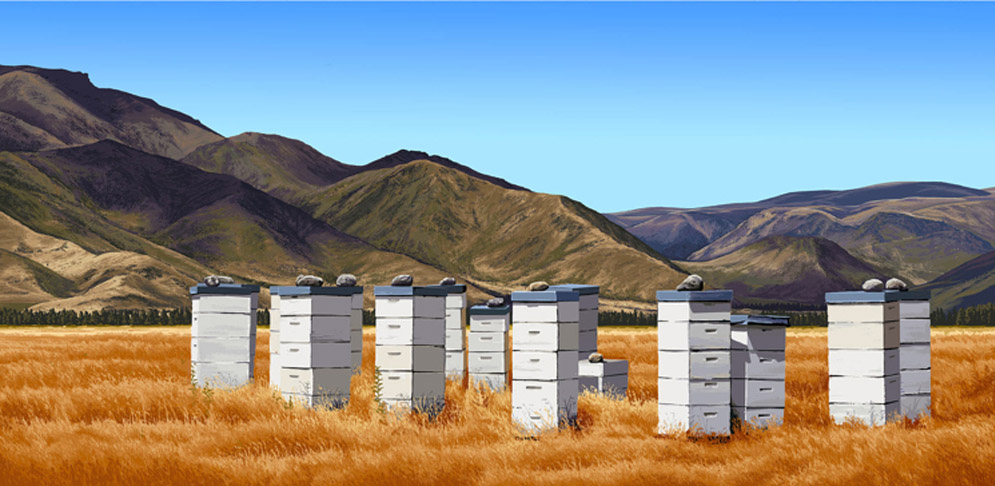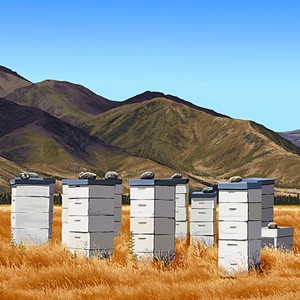Predominantly self-taught, Tayler describes himself as a “digital printmaker”, combining traditional techniques with computer-based tools to create original artworks. Digital printmaking in the fine arts arena is an exciting new development, and Tayler is something of a pioneer in this field. Instead of a blank canvas and paint box, he starts with a blank screen and a pen tablet. Working from his memory of a scene, together with photographs he has taken, Tayler creates each landscape stroke-by-stroke, using a pen that converts hand movements into brush strokes on-screen. A landscape comprises of up to 50 colours, with each colour painted on its own layer, working from lightest to darkest. More often than not the fine detail is created by reduction – removing colour from a layer above to let the colour below show through. Aside from the medium, the process is in every way traditional – just building up a picture one stroke, splash and mark at a time. Each scene takes up to 6 weeks to complete.
To ensure colour fidelity and accuracy, Tayler prints directly from the art file he has created to his own 12-colour, wide-format digital printer. After much research he chose this printer because it is specifically designed for fine art reproduction and art photography, producing prints suitable for museum and gallery display. It uses Hewlett Packard Vivera pigments which are among the highest rated for longevity – lasting for over 100 years. The beauty of this print method is its ability to reproduce the artist’s vision with incredible clarity and fidelity. Colours are exactly as they should be – vibrant and rich. And because there is no ‘original’ as such (being a digital artwork), every print is in itself an original.
The art paper is Hahnemuhle 308 cotton rag. This is a benchmark paper favoured by fine art photographers and artists the world over. It is an acid-free art paper that guarantees archival standards, and faithfully renders the colour and detail of the original artwork.





